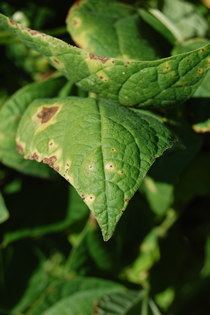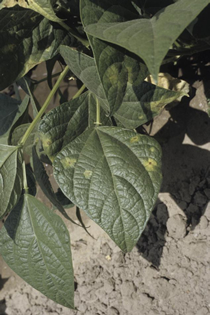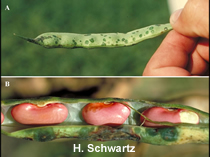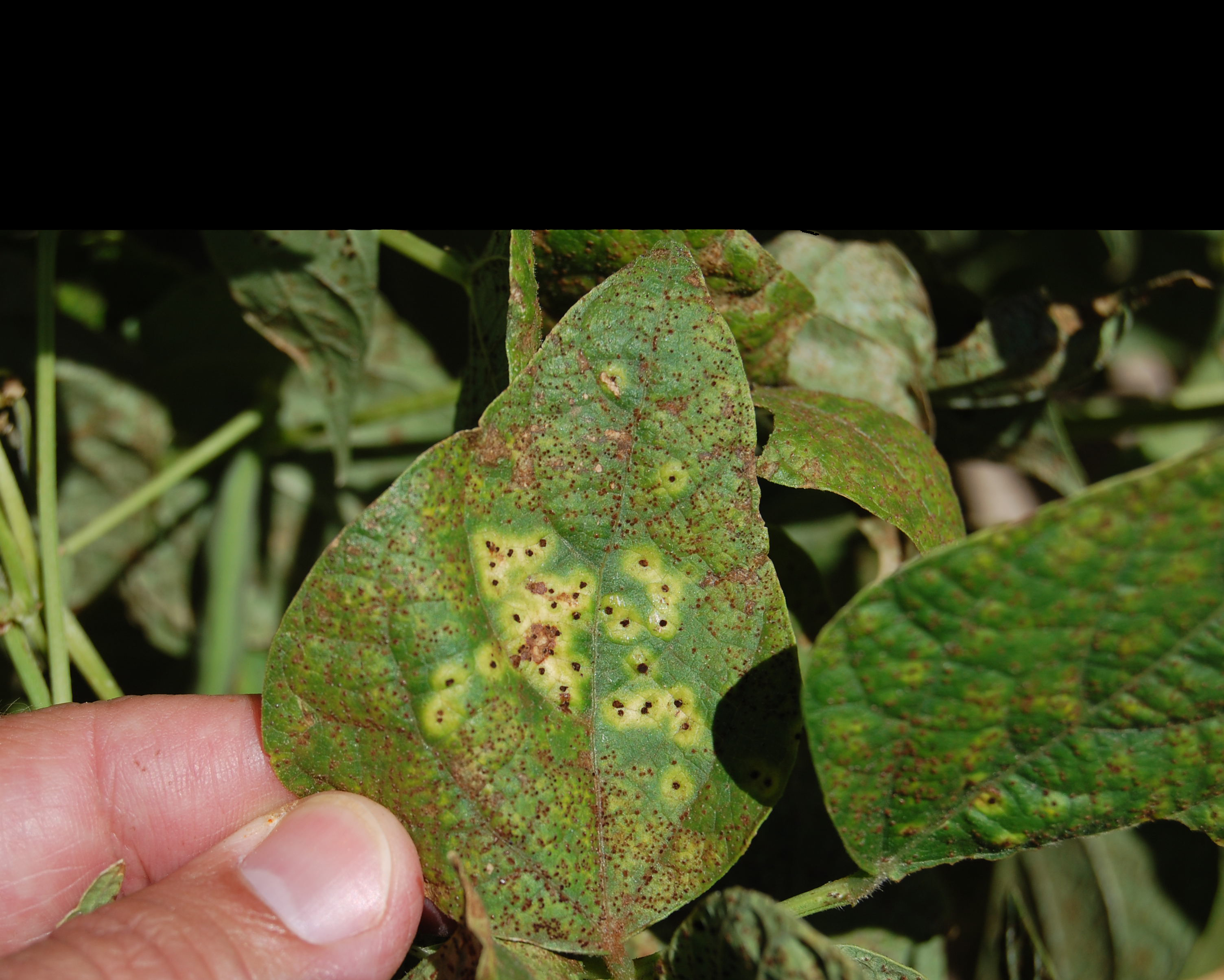By Robert Harveson, Extension Plant Pathologist
Pathogen
Pseudomonas syringae pv. phaseolica (Burkholder) Young et al. The pathogen is a strict aerobe, and is rod shaped with a gram negative staining reaction. On standard media, bacterial colonies are white to cream-colored. Maximum growth and production of the bacterial-induced toxin, phaseolotoxin is 70°-72°F. Experimental host range includes adzuki bean, lima bean, mung bean, scarlet runner bean, soybean, tepary bean, Macroptilium atropurpureum,Phaseolus polyanthus, Phaseolus polystachyus, and Pueraria lobata.
Disease Symptoms
First symptoms observe are small water-soaked spots on leaflets. Under arid conditions, this infected tissue dies and turns tan-colored and necrotic. Abroad yellow to green halo surrounds the lesion, distinguishing this disease from the narrow yellow band caused by common bacterial blight. This halo symptom is not evident during periods of high temperatures. If infected systemically, young leaflets become curved and chlorotic without the presence of necrotic spots or broad yellow halos. Pod symptoms begin as circular water-soaked spots or streaks along pod sutures with a creamy to silver colored bacterial ooze found in association with the water soaked areas.



Favorable Environmental Conditions
Like common blight, the halo blight pathogen survives in residue or seeds from the previous year. Conversely, cool weather favors disease development of halo blight and production of the toxin that forms the distinctive halos and systemic yellowing. Wet weather, hail, violent rain and windstorms help the pathogen to spread among and between fields. Continuous bean cropping also helps the pathogen survive in infected debris.
Management
Genetic Resistance
Use seed that is blight tolerant where possible, and certified to be disease-free.
Cultural Practices
Don't spread old bean straw into fields to be planted with beans. Avoid going into fields that are wet. Other cultural practices for management include avoiding the reuse of irrigation water, and incorporating infected debris after harvest and rotating out of beans with other crops for at least two years.
Chemical/Biological Control
Treating seed with streptomycin helps to reduce contamination of the seed coat. Using of copper-based sprays at the mid vegetative to flowering stages will also help to provide some control.








